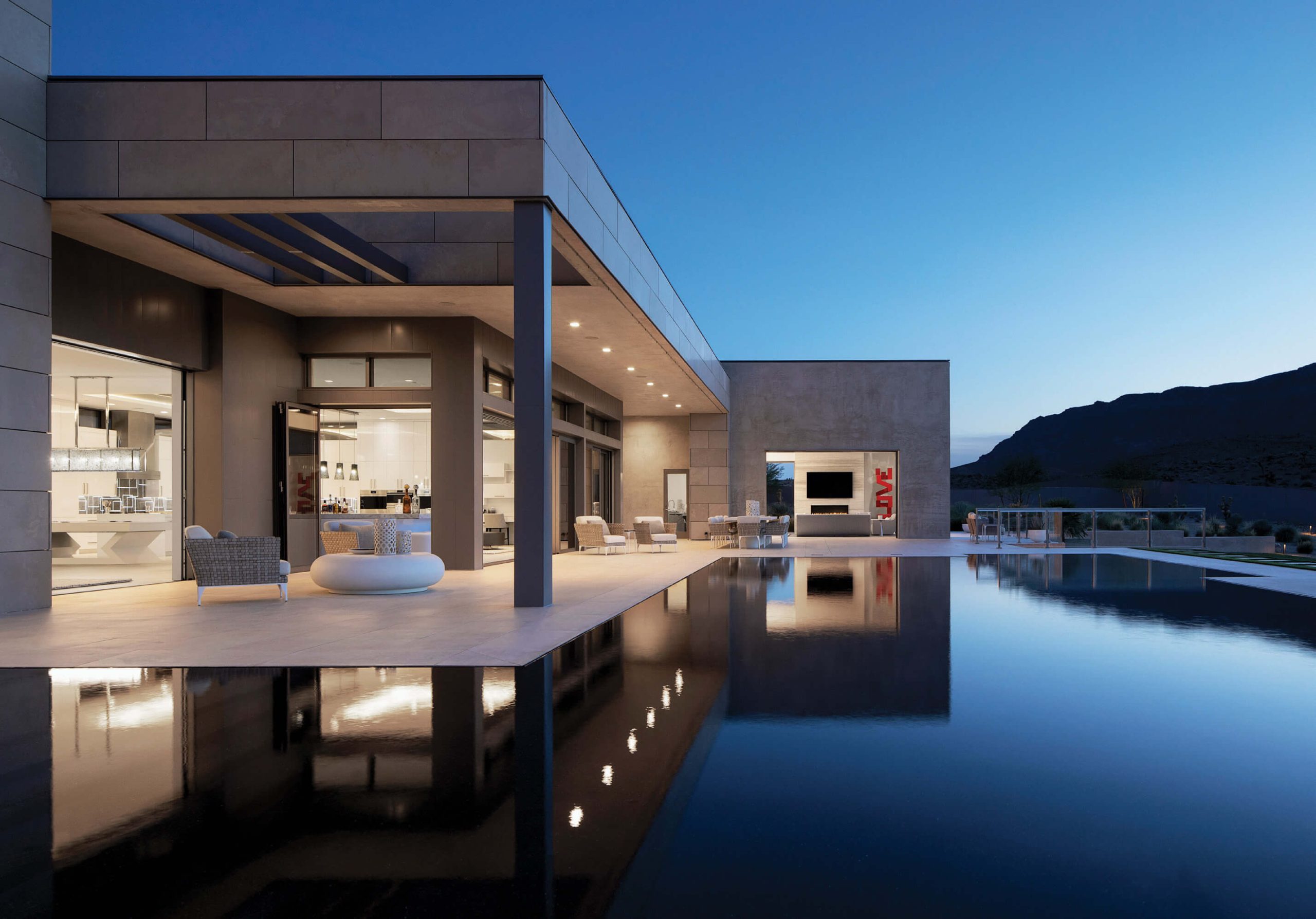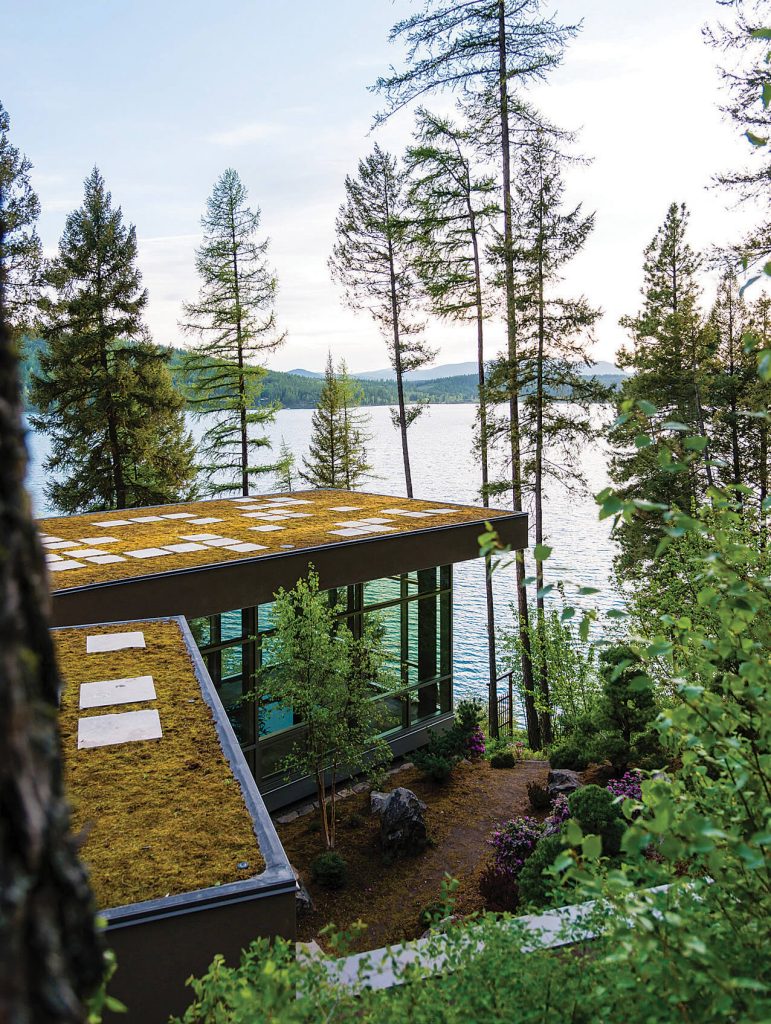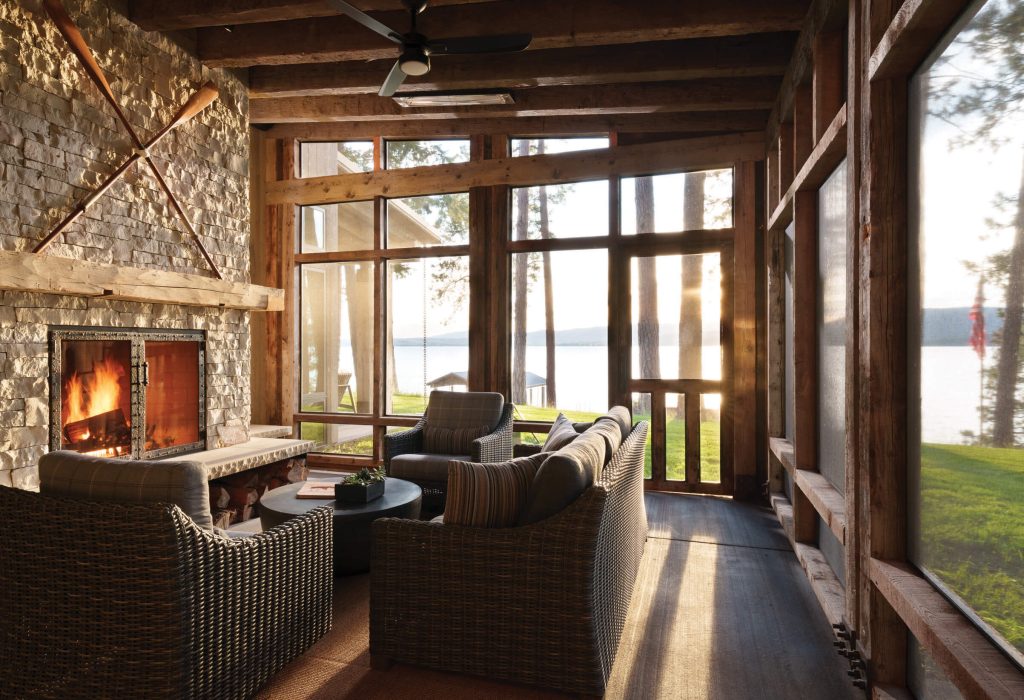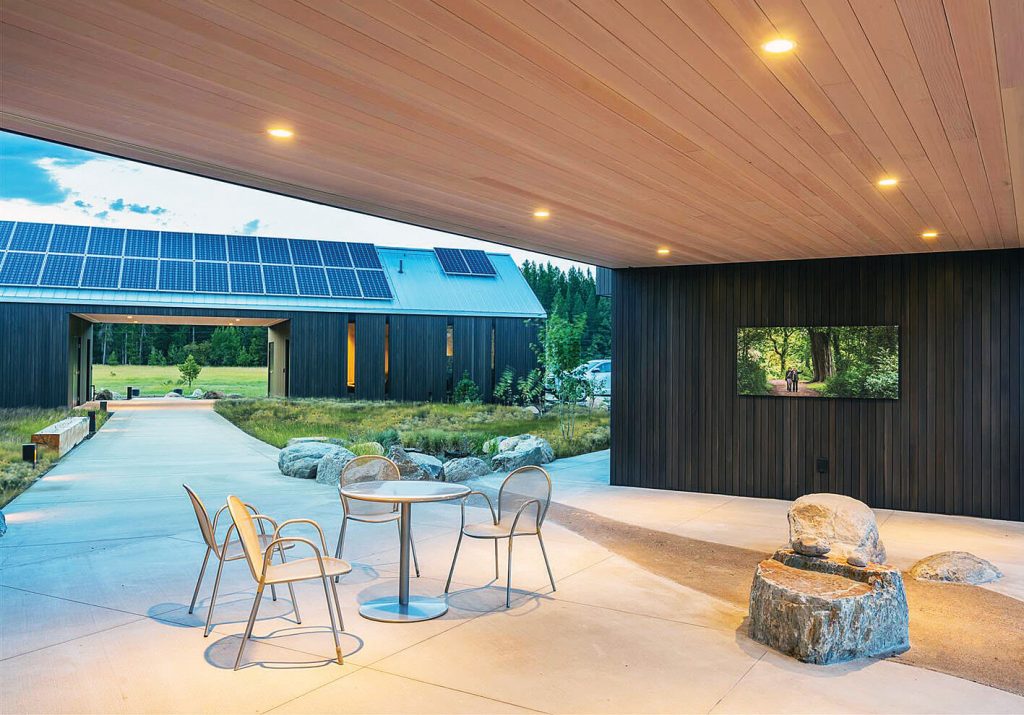
03 Apr DESIGN ELEMENTS: ETHOS: CUSHING TERRELL’S MULTIDISCIPLINARY BUILDING DESIGN
Since 1938, Cushing Terrell has sought to bring people together through impactful design. With 17 offices in eight states and projects spanning the globe, it’s become a respected firm for all aspects of commercial and residential design. However, a focus on people — their relationships with one another and the world beyond the walls of Cushing Terrell designs — remains the central driving force for the firm. How do people move through and interact with their spaces? How do you foster social interaction with architectural features? How do you create conversations between inside and out, the security of a home and the wild spaces beyond its threshold?

Perched on a steep slope above Whitefish Lake, this private pool-house design seeks to nest the small collection of buildings into the hillside, melding them into the natural contrasting grades. | PHOTO BY AUDREY HALL
Cushing Terrell Residential Director Jesse Vigil has been with the company for more than a decade and is still inspired by the impact of innovative, adaptive design on people and their sense of place. “Our passion is meeting you where you are and truly listening,” explains Vigil. “We like to dig in to find out how you live and guide you through how these rhythms can be incorporated into your design through aesthetics and functionality. Residential design is a very intimate practice, and when the design fits, it can be impactful and memorable.”
Here, Vigil reflects on the past, present, and future of Cushing Terrell.
BIG SKY JOURNAL: Describe Cushing Terrell’s trajectory, from its founding by two visionary architects to becoming a multidisciplinary powerhouse.
JESSE VIGIL: Cushing Terrell’s founders believed that integrating architecture, engineering, and design could deepen relationships and enhance creativity. Eighty years later, this foundational belief continues to define us. Being a multidisciplinary firm means we can bring teams of in-house experts together to collaborate with each other and our clients to create the best possible design solutions. Our firm really feels like a great big family.
BSJ: How has the company’s defining ethos evolved since its inception?
VIGIL: With a mission to discover imaginative, responsible, first-of-their-kind environments, our team members design systems and spaces that help people live their best lives, achieve their visions, and enjoy healthy, sustainable built environments. People are at the center of everything we do, which is reflected in our tagline: “Where design meets you.”
We also describe ourselves as “creative pioneers.” Our integrated, multidisciplinary approach has been there from the start and, when combined with our pioneering spirit, continues to deepen our expertise and grow our presence in more urban markets today. The focus on holistic collaboration has expanded our team to represent more than 30 in-house disciplines, including leaders in architecture, engineering, landscape architecture, interior design, and planning. Cross-pollinating our expertise impacts the scope and breadth of our innovation, from core areas of building design to decarbonization and sustainability consulting, from planning to adaptive reuse.
Our team is also driven by knowledge, which is why our design process begins and ends with research. It is both a delight and a responsibility to better understand how people live their lives within the spaces we design.

This large screened living space extends the seasons, allowing occupants to enjoy the outdoor space and lakeside views throughout the year. | PHOTO BY LONGVIEW STUDIOS / HEIDI A. LONG
BSJ: How does architecture and the lived-in environment impact lifestyle? What recent design features have proven the most compelling throughout the Rocky Mountain West?
VIGIL: Our mantra is to design a home or a space for the way you live. By listening to our clients’ needs and carefully considering the details of their personal and professional life rhythms and functional systems, we develop built environments customized to the lifestyles of those who will engage with them most.
Whether commercial or residential, however, we find that the best design solutions start with a thorough evaluation of the individual building site, where we gather information that will help inform and guide the design process. This approach ensures buildings are capable of seamlessly engaging with the environment by responding to and merging with its context.
Most of our clients seeking to build a home in the Northern Rockies are also looking to connect with nature. As such, we continue to see a desire for designs that allow the interior and exterior to flow seamlessly from indoor to outdoor living spaces. These spaces can be designed to be comfortably accessible across all four seasons and to take advantage of changing sun exposure throughout the day.
BSJ: What are some residential design trends in the Northern Rockies, and what direction do you expect those trends to take in the future?
VIGIL: We’re seeing a continued focus on spaces tailored to clients’ tastes and personal daily routines and habits. In general, people are becoming increasingly aware of how built spaces impact daily life — both at work and at home — either supporting or hindering healthy interaction with community and the environment.
That said, timeless, elegant designs are always trending. In particular, we’ve seen Mountain Modern develop and evolve over the years. Clean, modern lines can now seem effortlessly balanced with the use of historic elements and regional materials — stone, wood, and timber — to soften the sensory experience, adding warmth and texture. The result is a clean-lined design that responds to the environment and captures light, air, and views.
The focus on health and wellness — both personal and environmental — is continuing to impact design as well, in the visual language of interior spaces, connection to the outdoors, materials, and energy use. They’re important considerations that we don’t take lightly; we’re committed to creating environmentally responsible buildings that make people feel good.
Finally, sufficient garage space and outdoor gear storage is a consistent request from clients building their Northern Rockies dream home. With easy access to outdoor recreation, there’s always a need to create a place for bikes, kayaks, paddleboards, skis, UTVs, fishing gear — the list is long and rightly so. We also build intelligent transition zones into these spaces, creating an organic flow from outdoor recreation to the core of the home.

For this residence located on a bluff above the confluence of two rivers, the main house and guest space are organized along the bluff lines, intersecting at a covered outdoor terrace. | PHOTO BY HENRY DOMKE
BSJ: How do sustainable measures, energy efficiency considerations, and environmental impacts inform Cushing Terrell’s approach to architectural design, particularly in areas proximal to wild spaces and sensitive ecologies?
VIGIL: Cushing Terrell is compelled to be a responsible steward of the environment, reducing our own footprint and those of our clients. This commitment to sustainable design and decarbonization of our built environment is reinforced through a firm-wide sustainable design initiative that aligns with the American Institute of Architects’ Framework for Design Excellence; participation in the SME Climate Hub initiative, United Nations Race to Zero campaign, and MEP 2040 Commitment; and the establishment of a sustainability service sector to enable a more rapid and comprehensive response to client needs, as well as greater cohesion and focus on sustainability across the firm’s 30-plus disciplines, seven market sectors, and 17 offices.
Our vision for sustainable design is defined by balance — creating built and natural environments that aren’t just beautiful and timeless but are capable of supporting healthy futures for our clients and communities. We contribute to this balance by making sustainability foundational to our design and business operations.
BSJ: How does intentional architectural design create and support social connection within residential and commercial environments?
VIGIL: Creating a space that brings people together or “feels just right” really comes from harmony in functionality and aesthetics. By really listening to our clients, we gather more than just a visual sense of the spaces they want to build; we can see how the unique rhythms of the individual, family, or business will interact with — be supported or thwarted by — those spaces. With that information, we can curate spaces that are uniquely inspired by the individuals who will use them most. Factoring into all of that, customization is the social interaction inherent in shared spaces and our commitment to bringing people comfortably together. Effective design ensures that each moment spent in the spaces we shape becomes a memorable part of the shared experience of life.




No Comments